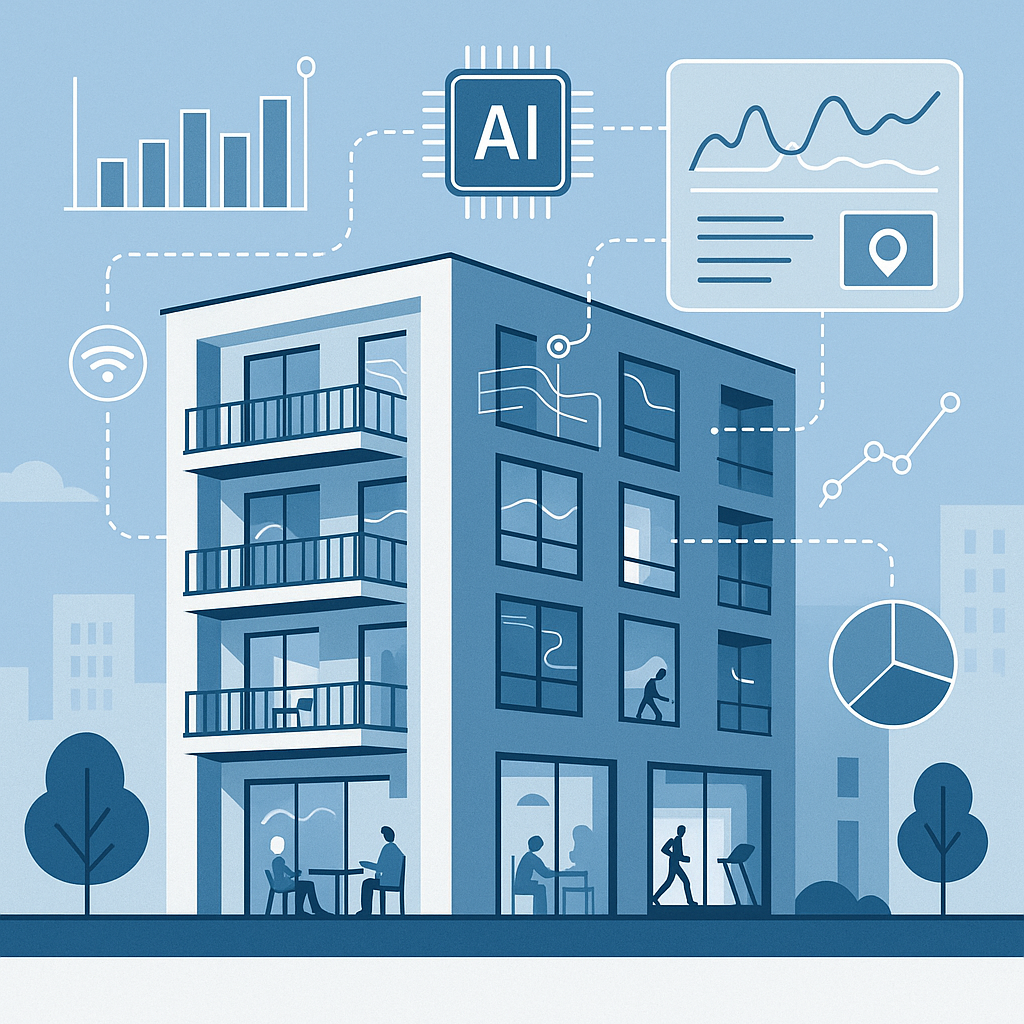Unlocking Data-Driven Insights in Build to Rent

In the Build to Rent (BTR) sector, the promise of truly understanding what residents want remains a perennial headline. Yet self-reported surveys often reflect what people think they should say, rather than what they actually do. This gap between stated preferences and real behaviour is especially critical when making high-stakes decisions about building design, amenity provision, and operational management.
Today, BTR buildings generate vast amounts of data through leasing platforms, maintenance systems, access controls, and more. However, much of this data remains siloed or locked behind limited dashboards, preventing operators from gaining a holistic, actionable view of resident behaviour and space utilisation.
Consider the significant investment required to create high-quality amenity spaces in modern BTR developments. With substantial resources devoted to design, construction, and fit-out, it becomes all the more important to understand how these areas are actually used by residents. Gaining clear, data-driven insights into real patterns of usage allows operators and developers to optimise both design and operational strategies - ensuring that amenity spaces deliver genuine value for both residents and investors.
A contact of mine recently shared an insightful anecdote from his experience staying in a new flexible living building with beautifully designed co-working and lounge areas. Despite their appeal, these spaces were rarely used by residents. Conversely, the gym was in near-constant use, prompting a revision of the cleaning schedule to maintain hygiene standards throughout the day. His observations, made simply by living there, hint at the untapped potential of integrating technology and data analytics from the outset.
Imagine if such behavioural data were captured automatically - through sensors, access logs, and AI-powered analytics - hardwired into the building’s operational platform. AI could parse patterns of space usage, resident movement, and amenity preferences, providing operators with real-time insights to tailor services, optimise cleaning regimes, and even correlate amenity usage with resident satisfaction and lease renewals.
Artificial intelligence is increasingly transforming the Living sector. From predictive analytics that forecast resident retention to AI-driven virtual assistants enhancing communication, these technologies empower operators to move beyond anecdote and attitudinal surveys toward data-driven decision making. AI can identify which resident segments use specific facilities, how often, and for how long, enabling more precise investment and operational choices.
Looking ahead, as the BTR market matures and asset trading becomes more sophisticated, buildings equipped with comprehensive behavioural data and integrated AI systems will likely command a premium - much like cars with full service histories. This “digital provenance” will offer transparency on operational performance and resident engagement that investors and operators value.
The challenge lies in overcoming the “unknown unknowns” - insights we don’t yet realise are possible until we start collecting and analysing the data. But just as gold miners sifted through clay and gravel to find nuggets of value, BTR operators who embrace data integration and AI stand to uncover hidden “paydirt” in resident behaviour and building performance.
The future of Build to Rent is not just about providing amenity space - it’s about understanding how that space is truly used, and leveraging technology to create smarter, more responsive living environments that deliver both resident satisfaction and commercial success.

A specialist consultancy focused on the Living sector
Get in touch